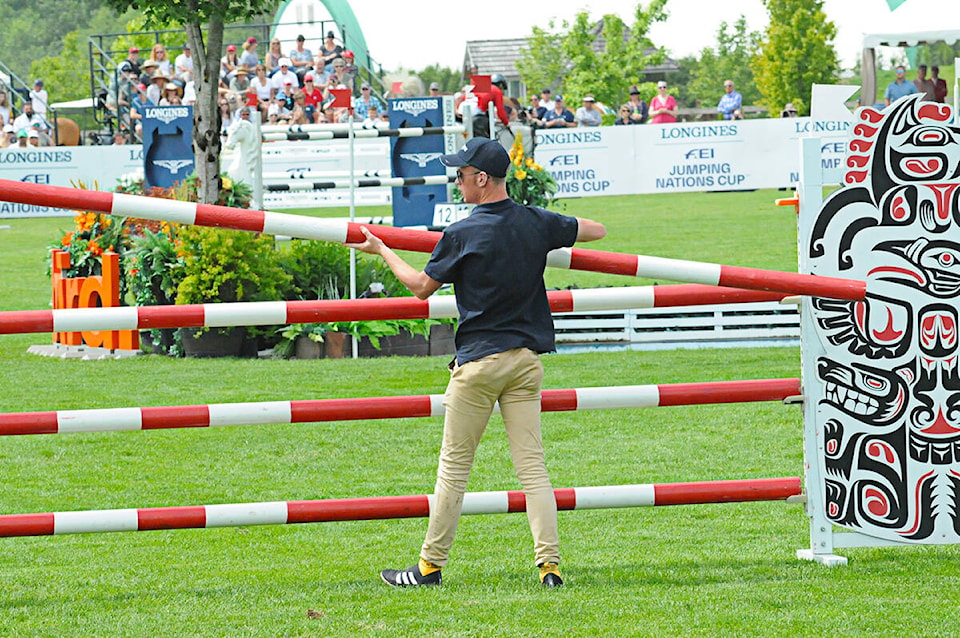Show jumping, in its most fundamental definition, is a rider and horse working together to jump a series of objects created based on strict rules.
Even those who have never eased into a saddle can still enjoy the teamwork and mastery involved in equestrian sports, particularly at this elite level.
It’s a precision sport, a sport of agility and focus and concentration because it’s a 1,200-pound animal galloping at 400-metres per minute, making huge leaps.
Some homework done in advance can help non-horse people better understand what they are watching in the ring.
On Sunday, there is $400,000 on the line in the Longines FEI Jumping Nations Cup. The competition is one of the highest classifications awarded by the Federation Equestre Internationale (FEI), the world governing body for horse sports.
The rating reflects the amount of prize money and the level of difficulty for the highest-level show jumping classes.
The competitors will be facing fences up to 1.60-metres in height and 2-metres in width. Each year the course design is done anew, so riders don’t know what they encounter until the competition, and there’s a few fun jump themes thrown in. One year it was Ogopogo added to one of the water elements.
There’s often no need for a scoreboard to understand exactly what happened and when.
Horse jumping is a more subtle sport when it comes to understanding scores, but the best advice may be to just sit back and enjoy.
Nations Cup events are like team sports, in that it is a collaborative effort by a team’s four riders and four horses to achieve the best score. However, each horse and rider also competes individually.
The most important thing to know is that the team of four riders and horses with the combined lowest number of faults will win.
There are two rounds of competition.
In the first round, the team coach decides the order. In the second round, the order is decided by the faults accumulated by the team.
Once both rounds are complete, the best three scores (the score with the most faults is eliminated) of each team’s riders will be combined and compared to other teams.
The team with the lowest score over the two rounds wins.
Riders are permitted to walk the course prior to jumping, to better understand the angles of approach and lines they need to take.
A clean round is every horse and rider’s goal, so spectators will always be cheering when a team completes a round of the course without knocking down rails and does so under the allotted time.
.
Jumping terminology
• Every rider hopes for a clean round which is when the horse completes the course within the time allowed and has no faults or refusals.
• Riders who achieve a clean round likely have the best takeoff – the optimal spot where the horse must be starting the jump to clear the obstacle.
• If a horse stops or runs to the side of an obstacle, this is called a refusal. The first refusal adds four faults. A second refusal results in elimination from the round, but if this second refusal happens in the first round at a Nations Cup, the horse and rider will still return for the second round.
• The order of the competitors plays a part in how horses and riders perform. This is known as Order of Go and is a random order based on a draw. It’s always best to be drawn last in the order.
.
Faults, knockdowns & jumps
• Four faults are assigned to a horse and rider team when they have a knockdown – when the horse and rider have knocked down the top part of a jump and it lowers the height of an obstacle.
• At water jumps, four faults are incurred if the horse’s hoof touches the water or the taped boundary marking.
• Time faults are allotted at one fault for every four seconds over the time allowed.
• There is a four-fault maximum for any jump, so whether the top bar jiggles slightly before dropping to the ground or all the rails for the whole obstacle go flying, it’s the same number of faults.
• Hitting or brushing a rail, but not knocking it down, does not result in a fault.
• A rail in the middle of the obstacle can fall and will not result in a fault. Faults are assigned only if the height of the jump is reduced.
.
Jump types
• Vertical gate which is quite easy to knock down
.
Have a story tip? Email: news@langleyadvancetimes.com
Like us on Facebook and follow us on Twitter.
